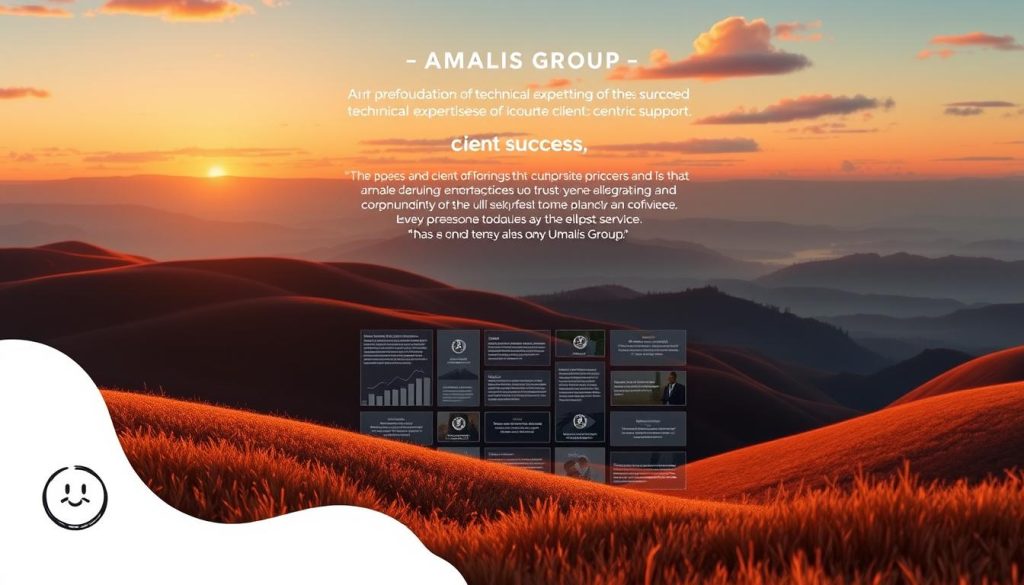Did you know that human-led services plus « as-a-service » models now grow faster than product-only revenue in many markets?
This shift means independent professionals must package, price, and position their work differently to secure predictable income. We explain how outcome-based thinking turns your expertise into clear, repeatable value.
Focus matters: a compact portfolio converts better than a long list of options. When you treat service offer management as a disciplined capability, you align to customer results, protect margins, and build recurring revenue.
We will show a pragmatic path to build, price, and deliver offers that reflect what a client values — not just the time you spend. You’ll get a product mindset for each offering: scope, packaging, pricing, and simple metrics for steady improvement.
Table of Contents
Key Takeaways
- Outcome focus: sell clear results, not hours.
- Keep your portfolio compact to help customers choose quickly.
- Move from cost-plus to value-led pricing to capture willingness to pay.
- Use simple playbooks and tools so you can deliver reliably alone.
- Align offers to customer business goals to boost satisfaction and retention.
Understand “service offerings” in today’s market context
Independent professionals must convert skills into compact offers that deliver measurable business results. A complete service offering combines target customer personas, a clear value proposition, defined outcomes, and simple packaging with pricing.
What a complete offering contains
Think of an offer as an integrated system: people, process, information, and technology working together to solve one customer problem.
Document capabilities—skills, templates, and light tooling—so your ability matches the promise. Define scope, inclusions, exclusions, timeline, and risks to protect delivery quality.
From features to outcomes
Frame your services around customer outcomes, not a checklist. One persona, one job-to-be-done, and one measurable result improve relevance and conversion.
« After each engagement, collect a short signal—NPS, outcome achieved, obstacles—to refine the offer. »
- Name the offer, state the problem, and show brief proof (metrics or short case notes).
- Prepare a one-sheet for when to recommend the offer and what the customer must provide.
Common pitfalls that weaken service offerings for independents
A cluttered portfolio often hides your best work and confuses potential clients. Too many options create choice paralysis and dilute the message you need to sell results. Keep the customer journey simple so each step leads logically to the next.
Fragmented development also undermines trust. When support, success, and professional work are designed in silos, messaging and delivery drift apart. That mismatch costs conversions and frustrates buyers.
Too many offers, no strategic flow: why simplification boosts conversion
We recommend restructuring a scattered list into a clear path: free content → diagnostic → paid engagement. Align content and pricing so each item supports the next and reduces friction.
Fragmented development and siloed messaging
Adopt a single messaging spine per offer: problem, persona, promise, proof. Use that spine across proposals, marketing, and delivery to avoid conflicting claims.
- Standardize deliverables and change-control to prevent offer creep.
- Create a simple management rhythm: define, launch, learn, iterate.
- State prerequisites and handoffs early to reduce mismatched expectations.
For a practical next step, read our transition guide to turn scattered items into a compact, revenue-focused path.
Design your service offering for outcomes and stability
Begin with one primary persona. Build each offer around a single job-to-be-done so your positioning is sharp and decisions are simple.
Translate outcomes into metrics. Choose two or three measurable indicators—time-to-value, conversion lift, or churn reduction—that anchor your promise and make performance clear.

Package and standardize: clear tiers and delivery models
Use tiered packaging (Lite, Core, Plus) with fixed scopes, timelines, and deliverables. Standardization prevents scope creep and speeds delivery.
Define delivery modes across DIY, WWY (we walk you), and DIFY (done-for-you) so customers pick the mix that fits budget and urgency.
Enablement for marketing and sales
Equip marketing and sales with concise content: a one-pager, scoping checklist, FAQs, and two short case snapshots. This raises readiness and shortens sales cycles.
- Capabilities: list skills, templates, and a simple playbook to keep process consistent under pressure.
- Dependencies: state required inputs, access, and approvals to avoid rework during delivery.
- Pricing guardrails: align tiers to effort while highlighting the value delivered, not hours billed.
« Lead with the result, back it with method and evidence, then list inclusions. »
Map your portfolio with a Service Offer Curve
A simple curve helps you connect trust-building content to paid engagements. The horizontal axis tracks relationship level; the vertical axis tracks money. Together they map free and paid items into one coherent flow.
Free-to-fee journey: publish public content, capture interest with a web opt-in, then offer a low-cost entry product or small paid engagement. The premium engagement sits at the top of the curve as the full outcome delivery.
Mix DIY, WWY, and DIFY to fit budgets
Design three delivery levels so customers choose what matches time and budget.
- DIY — self-paced guides, templates, low price; scales easily.
- WWY — coaching or collaboration; higher price, shared work.
- DIFY — done-for-you premium; highest price and direct impact.
Set coherent price points
Group offers into clear tiers so each price signals scope and expected value. Customers can enter at any point; smaller offers reduce risk and contextualize the premium.
- Place each offering on the curve to spot gaps or overlaps.
- Build a minimal content engine: one lead magnet, one nurture sequence, one CTA per tier.
- Use a quick diagnostic: if two items compete, consolidate or reposition them to protect margin and potential revenue.
Outcome: a visual service offer map that aligns products, services, and content into a clear path toward higher value for the customer and steadier revenue for your business.
Pricing strategy: shift from cost-plus to value-based pricing
Set prices that mirror the business outcomes you deliver. Traditional cost-plus rules often underprice human-led work. Value-based pricing captures the uplift you create and protects margin.
Identify and quantify outcomes—revenue lift, cost reduction, or risk avoided. Anchor the fee to a fair share of that impact so conversations stay business-focused and credible to the economic buyer.
Pilot tests and validate willingness to pay
Run small pilots with a cohort to measure realized outcomes. Use win/loss notes, discount requests, and procurement feedback as signals to tune tiers and inclusions.
« Launch like a product: test, measure, iterate. »
- Price logic table: map deliverables → outcome metric → assumed uplift → anchor price.
- Guardrails: document standard exceptions and approval rules to protect margin.
- Governance: review price quarterly; raise price when outcomes improve or effort drops.
| Stage | Focus | Metric | Action |
|---|---|---|---|
| Pilot | Measure real outcome | Before/after delta | Adjust tier and price |
| Scale | Standardize deliverables | Conversion & retention | Document guardrails |
| Review | Price health check | Margin vs. outcome | Quarterly repricing |
Integrate technology, people, and process for delivery
Modern delivery blends product features and human craft into repeatable, subscription-ready solutions.
For independents, the goal is simple: combine a minimal tech stack, clear roles, and tight playbooks so you can deliver predictably and scale income through recurring packages.

Blending product service and services in XaaS and subscription models
Design a modular offering that ties templates, office hours, and periodic optimization into one subscription. This hybrid approach lets you price against outcomes and keep renewals steady.
- Specify the minimal technology, playbooks, and roles needed to deliver as a solo operator or small team.
- Modularize steps so the same core method supports DIY, WWY, and DIFY, reducing reinvention and protecting quality.
- Codify handoffs from discovery to delivery to success so the customer sees one unified offer from start to finish.
Operational rhythms matter: kickoff rituals, quarterly business reviews, and value checks anchor retention. Map feedback into a backlog and schedule package updates on a predictable cadence.
| Component | What to define | Why it helps |
|---|---|---|
| Technology | Minimal stack, dashboards, templates | Speeds delivery, reduces errors |
| People | Roles, backup plans, facilitation skills | Maintains continuity when constraints arise |
| Process | Playbooks, handoffs, acceptance criteria | Keeps quality consistent and predictable |
Collaboration touchpoints between delivery and light product creation (checklists, dashboards) keep the offering coherent and make improvements actionable.
For a practical example of how to align capabilities with market needs, see our compact guide on professional transition and packaging.
Operationalize offer management like a product
Treat your portfolio as a product line. Start with the customer, define the outcome, and move through a predictable lifecycle: design, launch, measure, iterate. This makes management repeatable and easier to scale as a solo professional in France.
Formal lifecycle: design, launch, measure, iterate
Define the problem and persona first. Build a compact package with clear scope and launch guardrails. Measure win rate, time-to-value, NPS/CSAT, gross margin per service offer, and renewal likelihood.
Governance, data, and cross-functional collaboration
Apply light governance: naming standards, change logs, and versioning so the offer is auditable.
Synchronize client, partner, and contractor roles on one shared checklist. Centralized data guides decisions and aligns product and services backlogs into a single prioritization sequence.
Customer success monetization without eroding trust
Monetize adoption ethically: offer training bundles, quarterly value reviews, and adoption programs that boost outcomes without paywalling basic help.
Feedback loops for continuous improvement
Publish a short roadmap and run monthly reviews, post-mortems, and customer interviews. Allocate resources by impact—keep, fix, or retire—based on objective performance versus outcomes and margin.
« Launch like a product: test, measure, iterate. »
Step-by-step: build your independent pro offer set
Start by making your portfolio visible on one page. Count every free and paid item you currently list so you see the real scope of what you deliver.
List current services and resources; select your premium service
Write a short list of all products, services, and resources you publish: guides, audits, coaching calls, templates, and paid engagements.
Choose one premium offer—the one you most want to sell—and state its primary outcome in one sentence. This becomes your north star for positioning and marketing.
Back-map prerequisites and create strategic flow
Work backward from the premium offer. Identify the proofs, free content, or small wins a customer needs before they commit.
- Place items on a simple curve: content → lead magnet → low-cost diagnostic → core engagement.
- Reduce duplicates to two–five clear items; if two items compete, consolidate or sequence them.
- Define a tight sales micro-process: discovery, scoping, proposal, acceptance.
- Align web marketing: one lead magnet, one nurture, one CTA tied to the curve.
- Document delivery checklists and acceptance criteria to protect quality and predictability.
Set a 30-day review to track uptake, common questions, and early outcomes. Use that data to refine packaging, messaging, and management of the set.
Conclusion
Aim for clarity: fewer items, stronger promises, and reliable delivery that customers value.
Design a compact portfolio where each service offering maps to one clear outcome. Treat each service offering like a product: build tests, measure impact, and iterate from real customer feedback.
Keep pricing tied to value so margins reflect impact, not hours. Align delivery and customer success with your product-style management rhythm to improve retention and expansion through XaaS-style bundles.
Use a simple curve from free education to premium engagement so people can self-select the right next step. Regularly retire items that no longer meet client needs and protect your long-term potential.
Conclusion: clarity, value-led pricing, and consistent delivery create steadier income and stronger customer trust for independent professionals.
FAQ
What exactly does "service offering" mean for independent professionals?
A service offering bundles people, process, information, and technology into a coherent solution that delivers measurable business outcomes. For an independent professional, this means defining the work you do, the tools and steps you use, the expected results for clients, and the way you price and deliver it.
How do I move from describing features to selling outcomes?
Start by identifying the client’s job-to-be-done and the specific metrics they care about. Translate features into benefits tied to those metrics (time saved, revenue gained, risk reduced). Use case studies or simple pilots to show real-world impact and justify value-based pricing.
How many offers should I list on my website or brochure?
Keep the portfolio focused. Too many items dilute attention and complicate delivery. Aim for a clear free-to-fee path with a low-cost entry, a mid-tier core offering, and a premium option. This simplifies messaging and improves conversion.
What are common pitfalls that weaken independent offers?
The main issues are fragmentation—multiple unconnected options—and unclear scope or outcomes. Siloed development and inconsistent messaging also confuse buyers. Standardizing tiers and documenting delivery reduces these risks.
How do I design tiers and delivery models that scale?
Define clear scopes for each tier, specify what’s included and excluded, and set repeatable processes for delivery. Use templates, onboarding checklists, and role definitions so you can consistently deliver quality without overcommitting time.
What is a Service Offer Curve and how can I use it?
A Service Offer Curve maps the buyer journey from free content to premium, paid engagements. It helps you plan entry points (articles, lead magnets), mid-tier products (workshops, small projects) and high-value retainers. This alignment improves conversion and lifetime value.
How should I set prices—cost-plus or value-based?
Favor value-based pricing. Identify the outcomes you deliver and estimate the client’s willingness to pay based on that value. Run small pilots or tests to validate price points, then iterate based on feedback and conversion data.
What are DIY, WWY, and DIFY levels and when to use them?
DIY (do-it-yourself) offers guidance tools for self-serve buyers. WWY (what we yield) typically means advisory or coaching with limited hands-on delivery. DIFY (done-for-you) is full execution. Offer a mix so clients choose based on budget and desired involvement.
How do I integrate technology, people, and process without losing the human touch?
Automate repetitive steps (scheduling, invoicing, onboarding) while keeping strategic interactions human. Use collaboration tools and a clear process map so clients see consistent quality and you retain control over high-value decisions.
How should I operationalize offer management like a product?
Treat each offering with a lifecycle: define, launch, measure, iterate. Set KPIs (conversion, NPS, time to deliver), establish governance for updates, and create cross-functional feedback loops so improvements are data-driven.
Can customer success generate revenue without eroding trust?
Yes—by aligning success activities with client outcomes rather than upselling aggressively. Offer consulting blocks tied to measurable milestones and be transparent about scope, pricing, and expected benefits to preserve trust.
What quick steps help me build an offer set as an independent professional?
List current products and resources, choose one premium path to focus on, map prerequisites and delivery steps, and create a simple free-to-fee customer journey. Validate with a small group of clients before scaling.
How do I enable marketing and sales to communicate complex offerings clearly?
Provide concise positioning statements, buyer personas, one-page offer sheets, and ready-made content (emails, case studies). Train anyone who represents you on the outcomes, pricing logic, and expected client journey.





